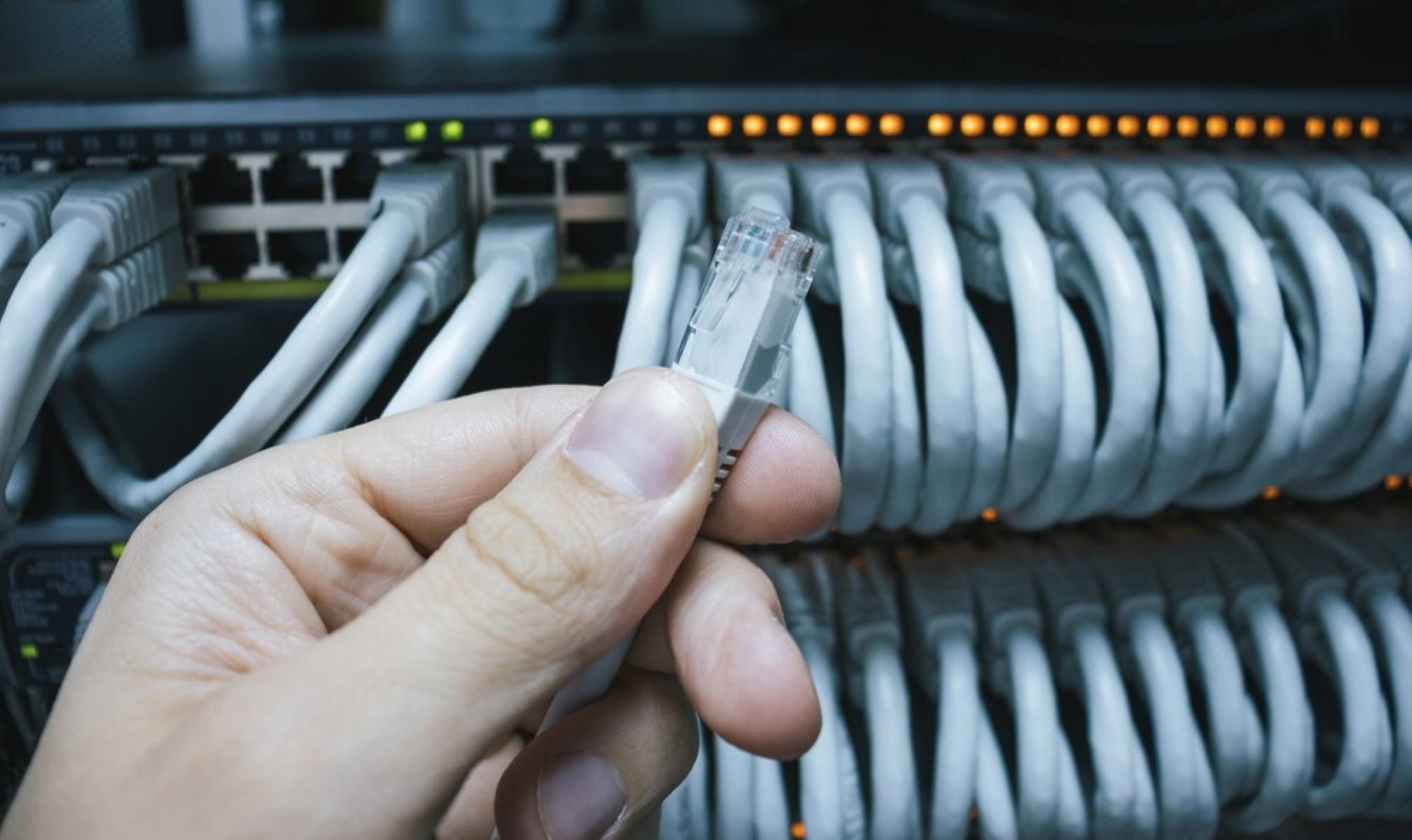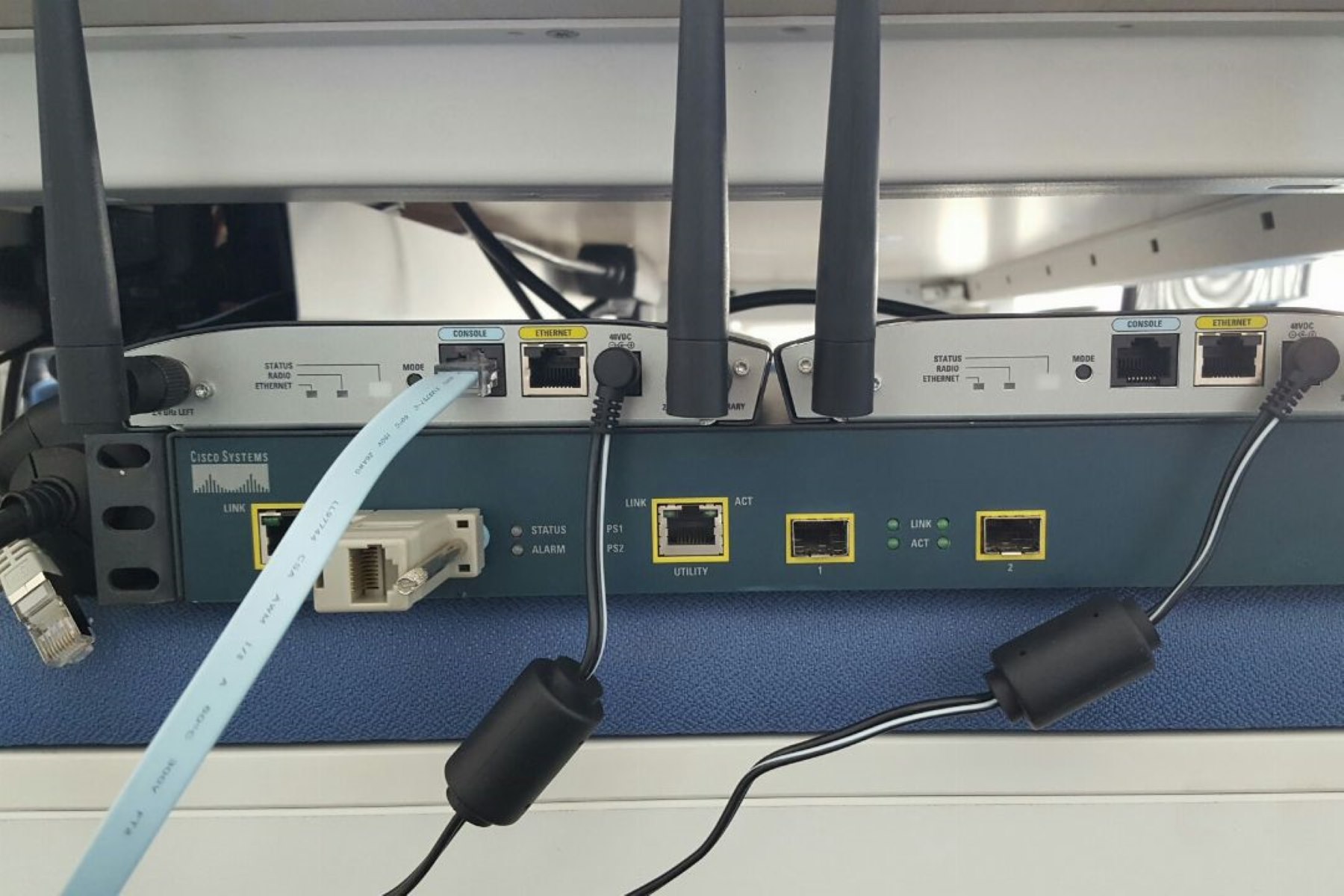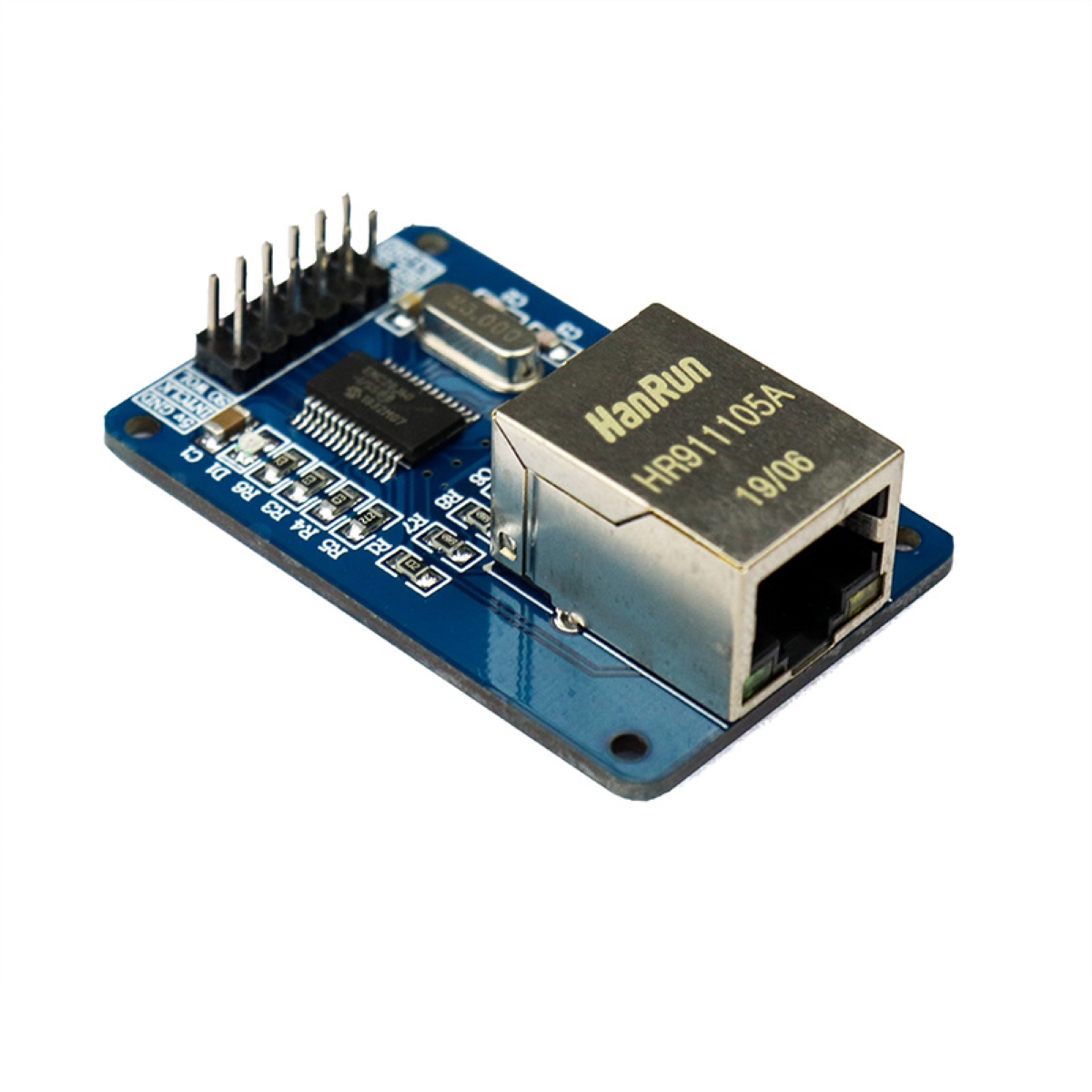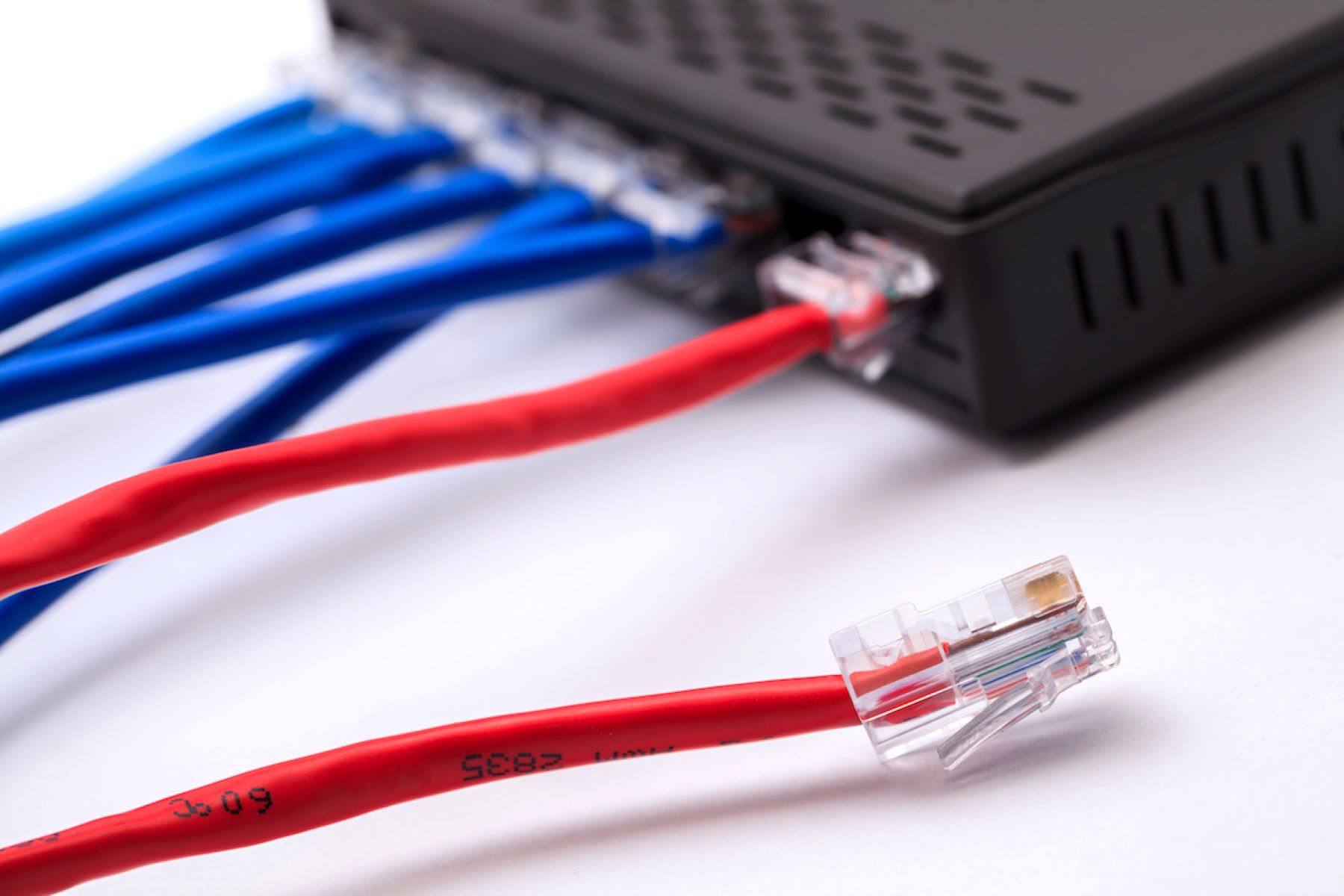Introduction
The Ethernet protocol is a fundamental component of modern network communications. It is a set of rules and conventions that enable devices to communicate and exchange data over local area networks (LANs) and wide area networks (WANs). Ethernet operates on the principles of layered architecture, with each layer providing specific functions and services to ensure reliable and efficient data transmission.
At its core, Ethernet is based on the concept of data packets. These packets contain the information being transmitted and are sent from the source device to the destination device across the network infrastructure. Each layer of the Ethernet protocol stack contributes to the successful transmission and delivery of these packets.
In this article, we will explore the various layers of the Ethernet protocol stack and examine their respective functions. By understanding how each layer operates, we can gain insights into the inner workings of Ethernet and appreciate its crucial role in modern networking.
It’s important to note that the numbering of the Ethernet protocol layers may vary depending on the reference model used. The most commonly referenced model is the TCP/IP model, which consists of seven layers. For the purpose of this article, we will follow the TCP/IP model to describe the functions of the Ethernet protocol layers.
Now, let’s dive into the fascinating world of the Ethernet protocol and explore its layers in detail.
Layer 1: Physical layer functions of Ethernet Protocol
The physical layer is the lowest layer in the Ethernet protocol stack. It is responsible for the physical transmission of data over the network infrastructure. The main functions of the physical layer include:
- Encoding and signaling: The physical layer determines how data is encoded into signals that can be transmitted over the network medium. It defines the voltage levels, timing, and modulation schemes used to represent bits of data. The most common encoding scheme used in Ethernet is Manchester encoding, where each bit is represented by a transition in the signal.
- Media selection: The physical layer determines the type of physical medium used for network communication. This can include copper cables, fiber optics, or wireless transmission. The choice of medium depends on factors such as distance, bandwidth requirements, and environmental considerations. Ethernet supports various media types, such as Ethernet over twisted pair (e.g., Cat5e or Cat6 cables) and Ethernet over fiber.
- Connector and pinout: The physical layer specifies the physical connectors and pinouts used to connect devices to the network. This includes the physical shape of the connectors (e.g., RJ45 for Ethernet over twisted pair) and the arrangement of pins for transmitting and receiving data.
- Collision detection: In shared media networks, such as Ethernet, multiple devices may attempt to transmit data simultaneously, resulting in collisions. The physical layer implements collision detection mechanisms to detect and handle these collisions, allowing devices to retransmit data if necessary. This helps ensure fair access to the network medium and minimizes data corruption.
- Link establishment and termination: The physical layer establishes and terminates the link between devices on the network. It handles tasks such as device discovery, link negotiation, and link maintenance. This enables devices to establish a reliable connection and exchange data over the network.
Overall, the physical layer of the Ethernet protocol plays a crucial role in ensuring the physical transmission of data. It converts digital data into signals that can be transmitted over the chosen network medium, handles collision detection and resolution, and establishes the connection between devices. Without a robust physical layer, reliable network communication would be impossible.
Layer 2: Data Link layer functions of Ethernet Protocol
The Data Link layer is the second layer in the Ethernet protocol stack. It is responsible for the reliable transmission of data between adjacent nodes on the network. The main functions of the Data Link layer include:
- Frame encapsulation: The Data Link layer encapsulates network layer data into frames, which are the basic units of data transmission in Ethernet. Each frame contains a header (containing source and destination MAC addresses), data payload, and a trailer (including error-checking information).
- MAC addressing: Each device connected to an Ethernet network has a unique Media Access Control (MAC) address. The Data Link layer uses MAC addresses to identify the source and destination of frames. This allows for proper routing and delivery of data to the intended recipient.
- Flow control: The Data Link layer implements flow control mechanisms to manage the rate at which data is transmitted between devices. It ensures that the receiving device can handle the incoming data and prevents overwhelming the network or causing data loss due to buffer overflow.
- Error detection and correction: The Data Link layer includes error detection mechanisms, such as cyclic redundancy check (CRC), to detect transmission errors. If an error is detected, the Data Link layer may request retransmission of the affected frame to ensure data integrity.
- Media access control: In Ethernet networks, multiple devices share the same network medium. The Data Link layer implements media access control protocols, such as Carrier Sense Multiple Access with Collision Detection (CSMA/CD), to coordinate access to the transmission medium. It ensures fair and efficient transmission by detecting and resolving collisions when multiple devices attempt to transmit simultaneously.
- Logical link control: The Data Link layer provides logical link control between devices on the network. It establishes, maintains, and terminates logical connections between nodes, ensuring reliable and error-free communication.
In summary, the Data Link layer of the Ethernet protocol plays a vital role in organizing data into frames, managing MAC addressing, facilitating flow control, detecting and correcting transmission errors, coordinating media access, and establishing logical connections. These functions contribute to the overall reliability and efficiency of data transmission within an Ethernet network.
Layer 3: Network layer functions of Ethernet Protocol
The Network layer, also known as the Internet layer, is the third layer in the Ethernet protocol stack. It provides network addressing, routing, and logical connectivity services. The main functions of the Network layer include:
- Network addressing: The Network layer assigns unique IP addresses to devices connected to the network. These IP addresses serve as the identifying information for devices and allow for proper routing of data packets across the network. Ethernet uses the IPv4 or IPv6 addressing scheme.
- Routing: The Network layer determines the best path for data packets to reach their destination. It uses routing protocols, such as the widely-used Internet Protocol (IP), to make decisions on packet forwarding based on factors like network congestion, link availability, and routing tables.
- Packet fragmentation and reassembly: In some cases, network layer protocols may need to fragment large data packets into smaller ones to accommodate the limitations of the underlying network infrastructure. The Network layer is responsible for fragmenting and reassembling these packets at the source and destination devices.
- TTL (Time-to-Live) management: To avoid indefinite circulation of packets within a network, the Network layer assigns a Time-to-Live value to each packet. This value represents the maximum number of network hops a packet is allowed to traverse before being discarded. The Network layer decrements the TTL value as the packet passes through each network node.
- Network layer protocols: The Network layer encompasses various protocols, including IP, ICMP (Internet Control Message Protocol), and ARP (Address Resolution Protocol). These protocols ensure proper addressing, error handling, and mapping of IP addresses to MAC addresses within an Ethernet network.
- Quality of Service (QoS) management: The Network layer may prioritize certain types of traffic, such as VoIP (Voice over IP) or video streaming, to ensure a better user experience. QoS mechanisms like traffic prioritization, traffic shaping, and bandwidth allocation help optimize network performance.
In essence, the Network layer of the Ethernet protocol is responsible for network addressing, routing, and logical connectivity. It assigns unique IP addresses, determines optimal routes for data packets, fragments and reassembles packets as needed, manages TTL values, implements various network layer protocols, and ensures QoS for different types of traffic.
Layer 4: Transport layer functions of Ethernet Protocol
The Transport layer is the fourth layer in the Ethernet protocol stack. It provides end-to-end communication services between processes or applications running on different devices. The main functions of the Transport layer include:
- Segmentation and reassembly: The Transport layer divides large data streams into smaller segments for efficient transmission over the network. At the receiving end, it reassembles these segments into the original data stream for delivery to the receiving application.
- Transport protocols: The Transport layer encompasses various protocols, such as TCP (Transmission Control Protocol) and UDP (User Datagram Protocol). TCP is connection-oriented and provides reliable, ordered, and error-checked delivery of data. UDP, on the other hand, is connectionless and offers a lightweight, best-effort delivery mechanism.
- Connection establishment and termination: For connection-oriented protocols like TCP, the Transport layer handles the establishment, maintenance, and termination of connections between applications. This involves a three-way handshake process to ensure both ends are ready for reliable data transmission.
- Flow control: The Transport layer manages the flow of data between the source and destination devices to prevent data overflow or loss. It uses techniques like sliding window protocols to adjust the transmission rate based on the receiving device’s capability to handle incoming data.
- Error detection and recovery: The Transport layer includes mechanisms to detect and recover from transmission errors that can occur across the network. It uses error detection codes and retransmission techniques to ensure data integrity and reliability.
- Port addressing: The Transport layer utilizes port numbers to identify specific applications or services running on devices. It allows multiple applications to communicate simultaneously on the same device by associating incoming data with the appropriate application or service.
In summary, the Transport layer of the Ethernet protocol facilitates segmentation and reassembly of data, incorporates transport protocols like TCP and UDP, establishes and terminates connections, manages flow control, detects and recovers from transmission errors, and uses port addressing to enable communication between specific applications or services.
Layer 5: Session layer functions of Ethernet Protocol
The Session layer, also known as the dialog controller, is the fifth layer in the Ethernet protocol stack. It establishes and manages communication sessions between applications running on different devices. The main functions of the Session layer include:
- Session establishment: The Session layer is responsible for establishing and maintaining sessions between applications. It coordinates and synchronizes the start and end of communication sessions, allowing applications to exchange data reliably.
- Session management: The Session layer handles session control and management tasks, such as session checkpointing, suspension, and resumption. It ensures that the communication between applications remains stable, even in the event of network disruptions.
- Authentication and authorization: In some cases, the Session layer may facilitate authentication and authorization processes between communicating applications. It verifies the identities of the participating applications and ensures that the necessary permissions are granted for the session.
- Session termination: When a session between applications is completed, the Session layer handles the termination process. It ensures that all resources associated with the session are properly released and that any remaining data is transmitted successfully before the session is closed.
- Synchronization and sequencing: The Session layer ensures proper synchronization and sequencing of data during a session. It establishes mechanisms to prevent data loss, duplication, or disorder, ensuring that the transmitted data is received in the correct order and without errors.
- Session recovery: In the event of a session failure or disruption, the Session layer is responsible for recovering and resynchronizing the session. It addresses any inconsistencies or data loss that occurred during the interruption to ensure the continuity of the communication.
The Session layer plays a crucial role in managing communication sessions between applications. It establishes and maintains sessions, handles session control and management, performs authentication and authorization, manages session termination, ensures synchronization and sequencing of data, and facilitates session recovery. These functions contribute to the overall reliability and integrity of communication within an Ethernet network.
Layer 6: Presentation layer functions of Ethernet Protocol
The Presentation layer is the sixth layer in the Ethernet protocol stack. It is responsible for the representation, encoding, and encryption of data exchanged between applications. The main functions of the Presentation layer include:
- Data formatting and representation: The Presentation layer transforms data from the application layer into a format that can be understood by the receiving application. This includes tasks such as data compression, data encryption, and data encoding (e.g., ASCII, Unicode).
- Data encryption and decryption: The Presentation layer can encrypt data to ensure its confidentiality during transmission. It implements encryption algorithms to convert data into ciphertext, making it unreadable to unauthorized parties. At the receiving end, the Presentation layer decrypts the ciphertext to recover the original data.
- Data compression: In order to optimize bandwidth usage and reduce transmission time, the Presentation layer is responsible for compressing data. It employs compression algorithms to reduce the size of data packets, thereby improving network efficiency and performance.
- Data syntax validation: The Presentation layer validates the syntax and semantics of data transmitted between applications. It ensures that the data adheres to the agreed-upon format and structure, helping to prevent errors or inconsistencies during the transmission process.
- Data translation and conversion: The Presentation layer can handle data translation and conversion tasks between different data formats or character sets. It enables interoperability between applications that may use different encodings or representations of data.
- Data encryption and decryption: The Presentation layer can encrypt data to ensure its confidentiality during transmission. It implements encryption algorithms to convert data into ciphertext, making it unreadable to unauthorized parties. At the receiving end, the Presentation layer decrypts the ciphertext to recover the original data.
The Presentation layer acts as an intermediary between the application layer and the lower layers of the Ethernet protocol stack. It handles tasks related to data formatting, representation, encryption, compression, syntax validation, and translation. By performing these functions, the Presentation layer supports compatibility, data security, and efficient transmission of information within an Ethernet network.
Layer 7: Application layer functions of Ethernet Protocol
The Application layer is the topmost layer in the Ethernet protocol stack. It is responsible for providing network services and interaction between the user and the network. The main functions of the Application layer include:
- Application protocols: The Application layer encompasses various protocols that enable specific network services, such as HTTP (Hypertext Transfer Protocol), FTP (File Transfer Protocol), SMTP (Simple Mail Transfer Protocol), and DNS (Domain Name System). These protocols define the rules and formats for exchanging data and requests between applications.
- User interface and data presentation: The Application layer provides a user interface that allows users to interact with network services. It enables the presentation of data in a human-readable format and manages the flow and presentation of information to the user.
- Content negotiation: The Application layer facilitates content negotiation between applications. It allows applications to agree on the preferred format or encoding for data exchange, ensuring compatibility and efficient communication.
- File transfer and remote access: The Application layer supports file transfer and remote access capabilities. It enables users to transfer files over the network using protocols like FTP or access remote resources through protocols like SSH (Secure Shell).
- Email and messaging: The Application layer includes protocols for sending and receiving emails, instant messaging, and other forms of electronic communication. It allows users to exchange messages and interact with messaging servers.
- Application-specific functionalities: The Application layer can provide application-specific functionalities and services. These can include data synchronization, streaming media, virtual terminal services, network management, and more.
The Application layer is the layer closest to the end-user and provides the interface and functionalities that allow users to take advantage of network services. It encompasses various application protocols, manages user interfaces and data presentation, supports content negotiation, facilitates file transfer and remote access, enables email and messaging capabilities, and offers application-specific functionalities. Through the Application layer, users can seamlessly interact with network services and applications in an Ethernet network.
Conclusion
The Ethernet protocol is a critical component of modern network communications, allowing devices to communicate and exchange data efficiently. By following a layered architecture, the Ethernet protocol stack provides a structured approach to ensure reliable and effective data transmission.
In this article, we explored the functions of each layer in the Ethernet protocol stack, starting from the Physical layer, responsible for encoding and signaling, to the Data Link layer, managing frame encapsulation and flow control. We then moved on to the Network layer, handling network addressing and routing, followed by the Transport layer, providing segmentation and reassembly of data. The Session layer manages session establishment and termination while the Presentation layer deals with data formatting, encryption, and syntax validation. Finally, the Application layer offers various protocols and services for end-user interaction.
Each layer of the Ethernet protocol stack plays a crucial role in ensuring the reliable and efficient transmission of data. From the physical transmission of signals to the presentation of information to users, each layer contributes to the overall functionality and performance of the Ethernet network.
By understanding the functions of each layer, network administrators and developers can troubleshoot issues more effectively, optimize network performance, and design robust network architectures. The Ethernet protocol continues to evolve and adapt to the changing needs of modern network environments, making it a foundational technology in today’s digital world.
In conclusion, the Ethernet protocol, with its various layers, lays the foundation for secure and seamless network communication, enabling the transfer of data across devices and supporting a wide range of applications and services. Understanding how each layer functions is essential for maintaining and improving network performance and ensuring reliable data transmission.

























